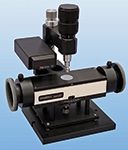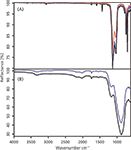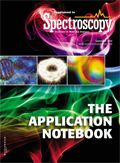Optimized Grazing Angle Ge-ATR of Monolayers and Thin Films on Si
Application Notebook
Grazing angle Ge ATR spectroscopy is extremely sensitive to monolayers and thin films on high refractive index substrates such as Si.
Grazing angle Ge ATR spectroscopy is extremely sensitive to monolayers and thin films on high refractive index substrates such as Si. As with any ATR method, the sensitivity increases as the critical angle is approached, as demonstrated herein.
Monolayers and other thin coatings on Si and other high refractive index substrates are of key importance in materials science, bioscience, synthetic organic, and semiconductor research. These films are often close to the FTIR detection limit so methods that improve sensitivity are vital. Traditionally, these samples were examined by transmission or grazing angle specular reflectance spectroscopy. Grazing angle Ge-ATR has recently gained wider use because of its higher sensitivity. Grazing angle Ge-ATR measurements have typically been recorded at 65°, an angle sufficiently above the critical angle for the Si-Ge interface, 58.7°.
This note explores the increased sensitivity gained by optimizing the incident angle and also discusses the potential spectral anomalies if the nominal critical angle of a given sample is exceeded.
Experimental
The grazing angle Ge-ATR measurements were carried out in a commercial FTIR spectrometer, using Harrick's VariGATR™ accessory at selected incident angles from 60° to 65° (see Figure 1). Spectra were collected at an 8 cm-1 resolution and signal averaged over 32 scans. The samples investigated were thin films on Si substrates. Each sample was pressed against the ATR crystal using the same force using the VariGATR's built-in pressure applicator and force sensor.

Figure 1: The VariGATR⢠shown with its Force Sensor.
Results and Discussion
Figures 2a and 2b show spectra recorded from two different samples at several incident angles. Both spectra have higher band intensities at the lowest angle measured. However, the spectrum of sample B shows significant dispersion effects at 60° which may complicate interpretation. These include a sloping baseline and a visible step between the high and low wavenumber edges of the bands. These effects are not apparent in the spectrum of sample A.

Figure 2: (a): ATR spectrum of sample A recorded at an incident angle of 65° (red), 63° (blue), and 60° (black) with an applied force of 722 N. (b): ATR spectrum of sample B recorded at an incident angle of 65° (blue) and 60° (black) with an applied force of 700 N.
Conclusion
In conclusion, it is clear that selecting the incident angle to approach the critical angle does increase sensitivity. However, for ease of interpretation, the incident angle should be optimized for greatest sensitivity without significant dispersion effects.
Harrick Scientific Products, Inc.
141 Tompkins Ave., 2nd floor, Pleasantville NY 10570
tel. (914) 747-7202; fax (914) 747-7409
Website: www.harricksci.com

Thermo Fisher Scientists Highlight the Latest Advances in Process Monitoring with Raman Spectroscopy
April 1st 2025In this exclusive Spectroscopy interview, John Richmond and Tom Dearing of Thermo Fisher Scientific discuss the company’s Raman technology and the latest trends for process monitoring across various applications.
A Seamless Trace Elemental Analysis Prescription for Quality Pharmaceuticals
March 31st 2025Quality assurance and quality control (QA/QC) are essential in pharmaceutical manufacturing to ensure compliance with standards like United States Pharmacopoeia <232> and ICH Q3D, as well as FDA regulations. Reliable and user-friendly testing solutions help QA/QC labs deliver precise trace elemental analyses while meeting throughput demands and data security requirements.